Rupert Matthews's Blog, page 15
August 31, 2019
William Shakespeare
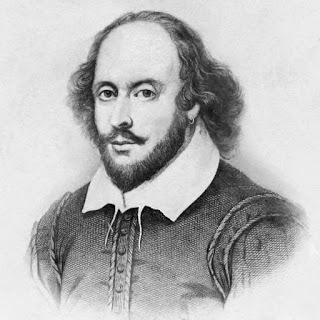
Voted the Man of the Millennium in 1999, William Shakespeare is one of the greatest writers in the English language and one of the world’s finest dramatists.
Possibly the writer the finest English literature ever written, William Shakespeare came from comparatively humble origins, William Shakespeare became the most famous dramatist of his age, mixed with nobility and met royalty. He achieved all this through his skill with the pen.
Shakespeare was born on 23rd April 1564 in Stratford-on-Avon in Warwickshire. His father was a glove maker and wool merchant who took an active part in local government. Although he had a fairly prosperous business, Shakespeare’s father often experienced cash flow problems when his debtors wanted their money before he was paid for work done. Nevertheless, Shakespeare was given a good education and joined his father’s business. In 1582 he married Anne Hathaway, a farmer’s daughter form nearby Shottery, and six months later their first daughter was born. Twins followed in 1585 and young William decided to seek a more reliable income than he could achieve helping his father.
Shakespeare knew the theatre from the London troupes which came on tour to Stratford, and he began to earn some money writing plays for them to perform. In 1592 Shakespeare’s King Henry VI part 1 was playing to packed audiences in London. The Rose Theatre put on several of Shakespeare’s early works, including Richard III and the Taming of the Shrew. then disaster seemed to strike Shakespeare’s new career. Plague broke out in London and the authorities blamed its rapid spread on the large crowds at theatres. Theatres were closed down.
Out of work as a playwright, Shakespeare turned to poetry. The money was not so good, but his elegant treatment of love, honour and revenge - subjects popular among the nobility - brought his work to the attention of important men at court, and even to royalty.
When the theatres were allowed to reopen in 1594 Shakespeare’s new fame put him into a position to be a joint owner of a new company, the Chamberlain’s Men. Performed the great tragic actor Richard Burbage and the comic genius Will Kempe, Shakespeare’s plays reached new heights of popularity. The Merchant of Venice, A Midsummer Night’s Dream, Richard II and As You Like It all belong to this booming period. But Shakespeare’s fortunes were about to get even better. In 1598 the Chamberlain’s Men opened a new theatre in Southwark, south of the Thames. It was built to be bigger and better than any other theatre, with a balcony and cellar to allow all manner of stage effects. The Globe, as the theatre was called, was phenomenally successful. For the next ten years, Shakespeare earned a large sum of money from his writings and part ownership of the troupe.
In 1608, at the age of 44, Shakespeare gave up full time employment in the theatre. His father was dead and his children were marrying. Shakespeare felt it was time for him to assume his duties as head of an increasingly large family. He used the money had earned from the London stage to purchase houses and lands in and around Stratford. He died in 1616, though it is not known from what cause.
Shakespeare’s writings gained enormous popularity from his knack of appealing to popular tastes. When the public wanted comedies, he wrote comedies. When a tame performing bear was available he included a bear in the play. But his subsequent fame proved to be so enduring because of his treatment of character. Shakespeare could create the words and dialogue that revealed the true depth of his characters. Unlike some other playwrights, Shakespeare did not allow the story to drive his characters. Instead his characters created the storyline by their jealousies, loves and ambitions. The unique gift of combining massive popular appeal with highly skilled writing was unique to Shakespeare. There have been better playwrights and there have been more popular playwrights, but nobody has outdone him in the combination of the two.

Published on August 31, 2019 10:22
The Fall of France 1940

In the spring of 1940 the German army overran country after country as Hitler pursued his ambition of making Germany the most powerful state in Europe.
The seemingly unstoppable German advances began on 9th April when a combined air, sea and land assault overran Denmark in a single morning. Norway was next, with German forces landing at Bergen, Trondheim, Kristiansand and Narvik. A British fleet, which had been off the Norwegian coast to lay mines, attacked the German invasion fleets, but was heavily outnumbered. The Norwegians held out in the mountains for almost a month, the final units surrendering on the 5th May.
It soon became clear that the invasions of Denmark and Norway had been merely sideshows, designed to secure the German flank. On 10th May the main German attack began as they invaded Holland, Belgium, Luxembourg and France. The largest French army was in the south, defending the Franco-German border, though many units joined the British in advancing into Belgium to attempt to hold the line of the Dyle River.
But the Germans were using their new Blitzkrieg tactics. Large columns of tanks, armoured vehicles and motorised infantry supported by heavy artillery and bombing from aircraft thrust deep behind the British and French lines. While the British were holding firm in Belgium, they were being outflanked to the south. On the 17th Lord Gort, the British Commander, decided to start planning his retreat. First he tried a counter-attack with his tanks, but although the British achieved a limited local advance, it did nothing to stop the surging German advance towards the sea.
On the 20th May the Germans reached the sea at Abbeville. The British army and many French units were isolated from the main French army to the south. Lord Gort turned to the navy to evacuate his men. The navy responded with Operation Dynamo, a hastily put together plan which involved getting the army on to ships in Dunkirk Harbour while a rearguard held off the advancing Germans.
On the evening of the 26th the first troops began to be loaded on to ships. It soon became clear the navy could not get the men off in time, so an appeal went out for small boats - such as trawlers, fishing boats, yachts and pleasure boats - which could get close enough to the beach to pick up soldiers direct from the land.
On the 28th the Belgians surrendered, opening a weak flank in the British position around Dunkirk. Having halted for a few days to regroup, the Germans attacked again, plunging Dunkirk into a storm of bombs and artillery fire. Several of the ships and boats trying to rescue the army were sunk, others badly damaged. The harbour facilities were almost totally destroyed and by the 1st June only a single pier remained open for use.
The evacuation carried on as German bombers pounded the beaches and ships and as the German troops moved ever closer. Finally at 2.40am on 4th June the destroyer HMS Malcolm pulled out of Dunkirk. The rescued Scottish troops on board played their bagpipes as the ship cruised slowly along the beaches of Dunkirk. Nobody was to be seen on the beaches. The only troops left were the dead, badly wounded and the heroic rearguard still holding off the Germans. The Malcolm turned away and headed for Dover.
In all some 338,000 men were rescued from Dunkirk. Although the British army had been forced to leave behind its tanks and guns, it came home more or less intact. The way in which ordinary civilians had sailed into the storm of gunfire in their little yachts to rescue the army and th the warm welcome given the troops when they arrived exhausted back home gave rise to what was called the Dunkirk Spirit, a feeling that everyone in Britain had to pull together to fight and win the war.
In France, meanwhile, the German army swung south after taking Dunkirk. On the 10th June the Germans broke through th the new French line and on the 14th the French government fled from Paris. Three days later the French asked Germany for terms of surrender. The few British, Polish and Czechs troops left in France at once rushed to sea ports to get away before the final surrender. On 22nd June, France surrendered. Britain was alone.
The History Man offers a range of services to publishers, film-makers and television producers as well as being a public speaker for lunches, dinners and other events. Find out more on: https://rupertmatthews.com/

Published on August 31, 2019 10:18
Why I did research on No.50 Squadron of the RAF
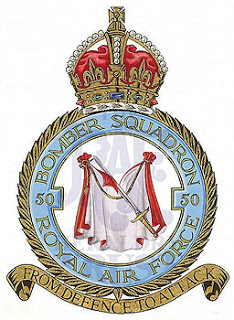
I came to Dover to look for the remains of the World War II radar station that stood on Swingate Down and was known as CH04. I knew that much of the radar station had been dismantled in the 1950s, but that the main mast had been retained and converted to broadcast BBC radio stations across Kent and the English Channel.
It took a bit of nosing about, but I eventually found the place. It was not until I got there and read the information board that I realised that CH04 had been built on the site of an earlier airfield that had been used by the RAF in the 1920s, and before then by the RFC in World War I. I made a note of the fact,and decided to look into this RFC airfield another time. Some while later, I had the opportunity to investigate RFC Swingate Down. It had been opened in 1914 to serve as a stop for refuelling aircraft on their way out to France, and then used for training purposes.
So far so good. But what intrigued me was that in the summer of 1916 the airfield at Swingate Down was recorded as having been the home base for a squadron of scouts (as fighter aircraft were then known) – and that the squadron in question had been No.50 Squadron. What puzzled me was that I knew that in World War II No.50 Squadron had been a heavy bomber squadron. Yet here it was in 1916 as a fighter squadron. Not only that but a little further research turned up the name of the squadron’s commanding officer: Major Arthur Harris.
So not only had one of World War II’s premier bomber squadrons been a fighter unit in World War I, but the great and famous Arthur “Bomber” Harris had been a fighter pilot. I was now thoroughly hooked. No.50 Squadron, its men and machines became a focus of research for me.

Published on August 31, 2019 10:00
Newbury West Fields, before the Railway
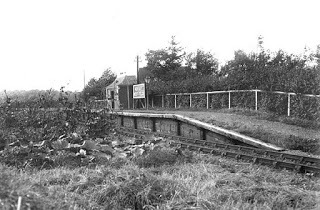
The now-vanished station of West Fields Halt in Berkshire stood, as its name suggests, on what were once open fields to the west of Newbury. The area is flat and low-lying, so the fields were mostly meadows beside the River Kennet that flooded in particularly wet winters. Livestock grazed here in the summer and river water flooded it in the winter. Newbury itself, however, was booming. The growth of Bath as a health resort for the gentry made Newbury an overnight stop on the coaching route from London to Bath. The number of inns in the town grew rapidly, which each new hostelry seeking to outdo the others in luxury and comfort. These provided hundreds of jobs, causing the population of the town to increase. At any one time there would be over a thousand horses in Newbury, and they all needed feeding. The West Fields were given over to grazing and haymaking.
When the Great Western Railway built its first main line from London to Bristol it went to the north, bypassing Newbury. The coaching trade collapsed as people preferred to travel by rail and the prosperity of Newbury vanished almost overnight. The railway eventually came to Newbury in 1847 when the Berkshire and Hampshire Railway built its lines linking Reading, Hungerford and Basingstoke. The line was later taken over by the Great Western Railway.
The line from Newbury to Hungerford ran straight across the West Fields, slicing them in two. The building of the line necessitated the draining of much of West Fields so that they no longer flooded in winter, and the land went over to agricultural use. In later Victorian and Edwardian times the town began to spread, though this was mostly north of the river. As yet the built up area was not expanding much into West Fields.

Published on August 31, 2019 09:51
August 29, 2019
Firewatching in London, 1941
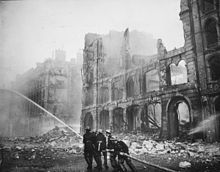 Anyway to get back to Leonard [my father] in London. Getting people to stay at the office all night fire watching was not easy. Offices were uncomfortable and did not have cooking facilities and anyway people wanted to get home and fire watch there — especially when that pretty Mrs. Jones was on duty.
Anyway to get back to Leonard [my father] in London. Getting people to stay at the office all night fire watching was not easy. Offices were uncomfortable and did not have cooking facilities and anyway people wanted to get home and fire watch there — especially when that pretty Mrs. Jones was on duty.So quite often offices were not fire watched and did indeed burn down when they might have been saved. So Leonard and another journalist in the air force with him, George Allen, fell to calling round at the office in Farringdon Street where Leonard had worked before the war and where he hoped to carry on with his promising career after the war. They asked if anyone was fire watching that night and if there was no one or only one person, Leonard and George used to go round when they came off duty at the Air Ministry and fire watch at the Amalgamated Press — as this place was called.
Well in wartime you all have to do your bit, don’t you. And Leonard wanted to make sure he had a job to go back to.
One night when they were there, there was an incendiary raid on that part of London and quite a scattering of incendiary bombs fell on the roof of their office block. Now Leonard and George would start talking about this and staff members who remembered the war would talk about it with gusto. But George and Leonard would glance round and suddenly become rather reticent and say something about it had all happened in rather a rush and they could not really remember the details.
However it would seem that the two of them and the staff member managed to put out quite a few of the bombs, but then the sand ran out. (Supplies of sand and shovels were kept on rooftops of well managed companies — some did not bother and just hoped for the best.) Anyway Leonard and George ran out of sand, but several bombs were still sizzling away, so they grabbed the long handled shovels and tossed the bombs off the roof, over the side of the wall. Marvellous! Their building did not burn down and after the war Leonard went back to work there. Unfortunately the bombs fell on the building next door where no one was fire watching, no one put the bombs out and that building was gutted by the flames. Next morning the employees of the Amalgamated Press arrived and carried on with their jobs. The employees of the building next door were out of work. — Well they should have been fire watching shouldn’t they! War is merciless.
Of course after a while Leonard and George started denying this story — in case they were blamed for burning down the building next door — but we all believed that this is what really happened.

Published on August 29, 2019 08:42
August 28, 2019
The Zeppelin raid on Dover of 25 August 1915
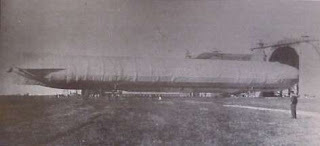 The Zeppelin raid on Dover of 25 August 1915
The Zeppelin raid on Dover of 25 August 1915The men of No.50 Squadron spent their first few weeks settling in and flying patrols out over the Dover Straits. Zeppelin raids took place over East Anglia and the Northeast, but no great airship came anywhere near Swingate Down.
Then, a little after 2am on the morning of 25 August a phone call came in from the Fire Brigade in Folkestone. Air engines could be heard over the sea to the east and, given the slow speed at which the engines seemed to be moving, they were almost certainly those of a Zeppelin. The squadron raced to its action stations. At 2.15am the Zeppelin passed over Folkestone harbour heading northeast. A searchlight near Dawkinge Wood managed to get its beam on the intruder, at which the anti aircraft guns of Folkestone opened fire. The sudden barrage of noise awoke the entire town and people poured into the streets to gaze upward at the ghostly white behemoth overhead. None of the exploding shells hit the Zeppelin, which then turned slightly south and moved out of range of the searchlight, causing the guns to fall silent. The unnamed man writing up the official record in the nightwatch book at Folkestone Fire Station thought that the Zeppelin “crew were probably endeavouring to baffle the gunners on the hills.”
In fact, the Zeppelin was doing nothing of the sort. The airship was LZ32 commanded by Oberleutnant-zur-See Werner Peterson, who had spent some time that night lost. Peterson was a highly experienced commander who would undertake over 70 missions in Zeppelins. He had now identified the town beneath him as Folkestone and thus knew that the great port of Dover, one of his targets, was only a short distance away. He was now heading for Dover, the change in course having been made necessary by a shift in the wind at altitude.
Meanwhile, No.50 Squadron was in the air and making for the scene of action. When the searchlight went out they had to rely on the faint starlight for guidance. There was quite a lot of cloud about and most pilots lost the airship among the clouds. One B.E.2c, however, found the LZ32. The pilot flew alongside while his observer poured his entire stock of bullets into the great airship. The hail of fire had no discernable impact on the Zeppelin, which continued on its course to Dover. Arriving over Dover, Peterson dropped his bombs on the harbour, and ships anchored outside, hoping to hit the various naval ships moored there. He failed to hit a single one, though there were some near misses.
Next day an official communique was issued by the German government to the pressmen from neutral countries in Berlin. It read:
“During the night of August 24-25 several naval dirigibles attacked the southern portion of the East Coast of England. They dropped numerous bombs on the City and the South Eastern district of London and the batteries at the naval stations at Harwich and Folkestone, and numerous vessels moored in Dover Harbour. Everywhere very good results were observed.”
The attack on the City of London had been real enough. LZ31 had bombed a wide area, killing 9 people, injuring 40 and inflicting £130,000 of damage. The claimed damage on Folkestone and Dover was, however, imaginary.

Published on August 28, 2019 04:16
March 31, 2017
Jack the Ripper - new book out
A new book and ebook by my friend and colleague, Leonard James, is now out in the "Walks through London" series.
This book guides the reader on a 5 mile walk around Whitechapel and nearby areas of the East End of London linked to Jack the Ripper. The walk takes in all the key sites associated with Jack the Ripper in chronological order. Unlike other books and guided walks, this guide includes important sites such as the building where the coroner's hearings were held, the police stations and the homes of two of the suspects that the police had their eyes on back in 1888. The text also gives the background to the killings, details of the crimes - and reveals the identity of the man who the author believes was the killer. This series of books is aimed at those who love London and want to find out more about our wonderful city and its history. Each walk concentrates on a particular person, theme or period of history with special meaning for London. We have tried to make these walks as inclusive as possible. We have therefore made sure that each walk covers ground that is suitable for buggies so that parents can take young children along, and for motorised wheelchairs or mobility scooters for those who use these vehicles. We also want to include dog owners, so we include cafes and pubs that welcome our four-legged walking companions. Similarly we mention those which are child-friendly and those with disabled toilets and step-free access. Oh, and take care as this is central London. Watch out for traffic when crossing roads and always use pedestrian crossings when these are available.Anyway, that is enough technical guff. Time to get on with the story of one of the London's most sinister and murderous villains: Jack the Ripper.
This book guides the reader on a 5 mile walk around Whitechapel and nearby areas of the East End of London linked to Jack the Ripper. The walk takes in all the key sites associated with Jack the Ripper in chronological order. Unlike other books and guided walks, this guide includes important sites such as the building where the coroner's hearings were held, the police stations and the homes of two of the suspects that the police had their eyes on back in 1888. The text also gives the background to the killings, details of the crimes - and reveals the identity of the man who the author believes was the killer. This series of books is aimed at those who love London and want to find out more about our wonderful city and its history. Each walk concentrates on a particular person, theme or period of history with special meaning for London. We have tried to make these walks as inclusive as possible. We have therefore made sure that each walk covers ground that is suitable for buggies so that parents can take young children along, and for motorised wheelchairs or mobility scooters for those who use these vehicles. We also want to include dog owners, so we include cafes and pubs that welcome our four-legged walking companions. Similarly we mention those which are child-friendly and those with disabled toilets and step-free access. Oh, and take care as this is central London. Watch out for traffic when crossing roads and always use pedestrian crossings when these are available.Anyway, that is enough technical guff. Time to get on with the story of one of the London's most sinister and murderous villains: Jack the Ripper.

Published on March 31, 2017 02:56
December 2, 2016
"A History of Christmas Food" now available in print

My book "A History of Christmas Food" is now available in print.You can order it now in time for delivery by Christmas.
90 pages
130x180mm
Published by Bretwalda Books.
Price £5 per copy, plus £3 for UK postage and packing for up to 5 copies. (£6 for overseas postage).
If you would like the book signed or dedicated to a particular person just let me know.
Payment by cheque or paypal. Make paypal payments to Rupert@bretwalda.demon.co.uk and follow up with an email to the same address. Cheques made payable to Rupert Matthews and sent to me at 8 Fir Tree Close, Epsom Downs, Surrey KT17 3LD.
Christmas today is a time of feasting, drinking and all round merrymaking. We serve vast meals that cause our dining tables to groan with the weight and our families to gasp at the luxury.
But it is not just a matter of serving huge meals. Christmas - more than any other time of year - is associated with its own special foods, drinks and eating customs.
Most Christmas foods are widely recognised. Roast turkey graces most tables, which also feature sprouts, roast potatoes, parsnips, bacon rolls, pigs in blankets, cranberry sauce and bread sauce. All that is in due course cleared away to be replaced by Christmas pud and mince pies.
Others are very personal. I grew up in a household where supper on Christmas Eve was always sausages and mash, and where the adults began Christmas Day by trooping down to the kitchen for "Grandma's Special Christmas Tea", which was consumed with much lip smacking and joking. As a tot I found this early morning ritual a bit odd, but when I grew older I learned that "Grandma's Special Christmas Tea" involved my grandmother tipping a healthy dose of whisky into each mug before pouring out the tea.
We take so much of this for granted as part and parcel of our Christmas traditions that we indulge ourselves without thinking. And if we do spare a thought we probably imagine that Christmas has always been like this.
But it hasn't. Christmases of years gone by were very different. Oh, there has always been plenty of eating and drinking going on, but what has been eaten or drunk has varied enormously.
So what did our ancestors eat and drink on the greatest feast of the year?
Read on.
Ebook available via Amazon.

Published on December 02, 2016 07:13
Santa Book now available in print
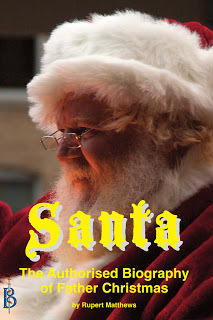
My Authorised Biography of Father Christmas is now available in print.You can order it now in time for delivery by Christmas.
90 pages
130x180mm
Published by Bretwalda Books.
Price £5 per copy, plus £3 for UK postage and packing for up to 5 copies. (£6 for overseas postage).
If you would like the book signed or dedicated to a particular person just let me know.
Payment by cheque or paypal. Make paypal payments to Rupert@bretwalda.demon.co.uk and follow up with an email to the same address. Cheques made payable to Rupert Matthews and sent to me at 8 Fir Tree Close, Epsom Downs, Surrey KT17 3LD.
Some people call him Father Christmas, other people name him Santa Claus, but whatever name he goes by we all know him.
He is the jolly, fat man who comes out only on Christmas Eve. He loads his sleigh up with toys for all the good children in the world. He wraps himself up in a warm, fur-lined suit of red cloth with matching hat and warm black boots. Then he hitches up his magic flying reindeer, leaves behind his workshop at the North Pole and takes to the skies. For hours he gallops across the wintry, frozen landscapes to bring toys to millions of excited children around the world.
He has become the living embodiment of the Christmas Spirit. But where did this loveable old boy come from? How old is he? Has he always been so jovial? And what about the elves, reindeer and North Pole?
Many people think that Santa was invented for an advertising campaign by Coca Cola. Others date him to Victorian times. A few may place him back in the 18th century or even Tudor times. But they are all wrong.
He is much, much older than that.
This book traces the development of our favourite Christmas character from his origins many centuries ago down to the present day. We learn when and how he started giving presents to children, why he is so fat and where the reindeer came from - among many other things.
Ebook available via Amazon.

Published on December 02, 2016 07:00
November 26, 2016
A History of Christmas Food - ebook out now
- With over 20 historic recipes
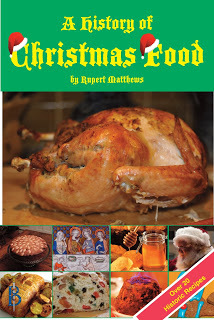
Buy the ebook HERE
Christmas today is a time of feasting, drinking and all round merrymaking. We serve vast meals that cause our dining tables to groan with the weight and our families to gasp at the luxury.
But it is not just a matter of serving huge meals. Christmas - more than any other time of year - is associated with its own special foods, drinks and eating customs.
Most Christmas foods are widely recognised. Roast turkey graces most tables, which also feature sprouts, roast potatoes, parsnips, bacon rolls, pigs in blankets, cranberry sauce and bread sauce. All that is in due course cleared away to be replaced by Christmas pud and mince pies.
Others are very personal. I grew up in a household where supper on Christmas Eve was always sausages and mash, and where the adults began Christmas Day by trooping down to the kitchen for "Grandma's Special Christmas Tea", which was consumed with much lip smacking and joking. As a tot I found this early morning ritual a bit odd, but when I grew older I learned that "Grandma's Special Christmas Tea" involved my grandmother tipping a healthy dose of whisky into each mug before pouring out the tea.
We take so much of this for granted as part and parcel of our Christmas traditions that we indulge ourselves without thinking. And if we do spare a thought we probably imagine that Christmas has always been like this.
But it hasn't. Christmases of years gone by were very different. Oh, there has always been plenty of eating and drinking going on, but what has been eaten or drunk has varied enormously.
So what did our ancestors eat and drink on the greatest feast of the year?
Read on.
Please note that in producing the recipes included in this book I have adapted original recipes found in books and manuscripts dating back to the times in question. Earlier recipes often did not include either precise measurements or detailed instructions, so I have experimented to find what seems to work best for me. I have generally sought to avoid recipes using ingredients that might be difficult to find these days or have suggested easily obtained alternatives when I have - how could I possibly miss out Mrs Beeton's original Christmas cake of 1861? Enjoy trying out these recipes and your taste of the past.

Buy the ebook HERE
Christmas today is a time of feasting, drinking and all round merrymaking. We serve vast meals that cause our dining tables to groan with the weight and our families to gasp at the luxury.
But it is not just a matter of serving huge meals. Christmas - more than any other time of year - is associated with its own special foods, drinks and eating customs.
Most Christmas foods are widely recognised. Roast turkey graces most tables, which also feature sprouts, roast potatoes, parsnips, bacon rolls, pigs in blankets, cranberry sauce and bread sauce. All that is in due course cleared away to be replaced by Christmas pud and mince pies.
Others are very personal. I grew up in a household where supper on Christmas Eve was always sausages and mash, and where the adults began Christmas Day by trooping down to the kitchen for "Grandma's Special Christmas Tea", which was consumed with much lip smacking and joking. As a tot I found this early morning ritual a bit odd, but when I grew older I learned that "Grandma's Special Christmas Tea" involved my grandmother tipping a healthy dose of whisky into each mug before pouring out the tea.
We take so much of this for granted as part and parcel of our Christmas traditions that we indulge ourselves without thinking. And if we do spare a thought we probably imagine that Christmas has always been like this.
But it hasn't. Christmases of years gone by were very different. Oh, there has always been plenty of eating and drinking going on, but what has been eaten or drunk has varied enormously.
So what did our ancestors eat and drink on the greatest feast of the year?
Read on.
Please note that in producing the recipes included in this book I have adapted original recipes found in books and manuscripts dating back to the times in question. Earlier recipes often did not include either precise measurements or detailed instructions, so I have experimented to find what seems to work best for me. I have generally sought to avoid recipes using ingredients that might be difficult to find these days or have suggested easily obtained alternatives when I have - how could I possibly miss out Mrs Beeton's original Christmas cake of 1861? Enjoy trying out these recipes and your taste of the past.

Published on November 26, 2016 01:13



